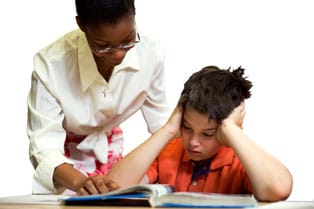Information Processing, Memory, Executive Function, and Metacognition
Marie Parnes PhD and Maria Pagano PhD
Learning Objectives
After reading Chapter 8, you should be better equipped to:
- Describe the development of Information Processing
- Understand how attention develops in infancy and childhood
- Define attention deficit disorder
- Comprehend theories of memory and the development of memory in infancy and childhood
- Define and explain executive function
- Understand metacognition
Information Processing Theory
Information Processing is not the work of a single theorist but is based on the ideas and research of several cognitive scientists studying how individuals perceive, analyze, manipulate, use, and remember information. This approach assumes that humans gradually improve in their processing skills; that is, cognitive development is continuous rather than stage-like. The more complex mental skills of adults are built from the primitive abilities of children. We are born with the ability to notice stimuli, store, and retrieve information, and brain maturation enables advancements in our information processing system. At the same time, interactions with the environment also aid in our development of more effective strategies for processing information.[1]
Attention
Changes in attention have been described by many as the key to changes in human memory (Nelson & Fivush, 2004; Posner & Rothbart, 2007). However, attention is not a unified function; it is comprised of sub-processes. The ability to switch our focus between tasks or external stimuli is called divided attention or multitasking. This is separate from our ability to focus on a single task or stimulus, while ignoring distracting information, called selective attention. Different from these is sustained attention, or the ability to stay on task for long periods of time. Moreover, we also have attention processes that influence our behavior and enable us to inhibit a habitual or dominant response and others that enable us to distract ourselves when upset or frustrated.[2]
Attention in Infancy
An approach to understanding cognitive development by observing the behavior of infants is through the use of the habituation technique, which was discussed in detail in Chapter 2, Research Methods. You should recall that habituation refers to the decreased responsiveness toward a stimulus after it has been presented numerous times in succession. Organisms including infants, tend to be more interested in things the first few times they experience them and become less interested in them with more frequent exposure. Developmental psychologists have used this general principle to help them understand what babies remember and understand. Although this procedure is very simple, it allows researchers to create variations that reveal a great deal about a newborn’s cognitive ability.[3]
The results of visual habituation research and the findings from other studies that measured attention utilizing other measures (e.g., looking measures such as the visual paired comparison task, heart rate, and event-related potentials ) indicate a significant developmental change in sustained attention and selective attention across the infancy period. For example, infants show gains in the magnitude of the attention-related response and spend a greater proportion of time engaged in attention with increasing age (Richards and Turner, 2001). Throughout infancy, attention has a significant impact on infant performance on a variety of tasks tapping into recognition memory.[4]
Attention in Childhood
Divided Attention: Young children (age 3-4) have considerable difficulties in dividing their attention between two tasks, and often perform at levels equivalent to our closest relative, the chimpanzee, but by age five they have surpassed the chimp (Hermann, Misch, Hernandez-Lloreda & Tomasello, 2015; Hermann & Tomasello, 2015). Despite these improvements, 5-year-olds continue to perform below the level of school-age children, adolescents, and adults. Older children also improve in their ability to shift their attention between tasks or different features of a task (Carlson, Zelazo, & Faja, 2013). A younger child who asked to sort objects into piles based on type of object, car versus animal, or color of object, red versus blue, may have difficulty if you switch from asking them to sort based on type to now having them sort based on color. This requires them to suppress the prior sorting rule. An older child has less difficulty making the switch, meaning there is greater flexibility in their attentional skills. These changes in attention and working memory contribute to children having more strategic approaches to tasks.
Selective Attention: Children’s ability with selective attention tasks improves as they age. However, this ability is also greatly influenced by the child’s temperament (Rothbart & Rueda, 2005), the complexity of the stimulus or task (Porporino, Shore, Iarocci & Burack, 2004), and along with whether the stimuli are visual or auditory (Guy, Rogers & Cornish, 2013). Guy et al. found that children’s ability to selectively attend to visual information outpaced that of auditory stimuli. This may explain why young children are not able to hear the voice of the teacher over the cacophony of sounds in the typical preschool classroom (Jones, Moore & Amitay, 2015). Jones and his colleagues found that 4 to 7-year-olds could not filter out background noise, especially when its frequencies were close in sound to the target sound. In comparison, 8 to 11-year-old older children often performed similarly to adults. Overall, the ability to inhibit irrelevant information improves during this age group, with there being a sharp improvement in selective attention from age six into adolescence (Vakil, Blachstein, Sheinman, & Greenstein, 2009).
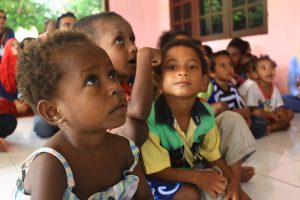
There is a sharp improvement in selective attention from age six into adolescence. [5]
Sustained Attention: Most measures of sustained attention typically ask children to spend several minutes focusing on one task, while waiting for an infrequent event, while there are multiple distractors for several minutes. Berwid, Curko-Kera, Marks, and Halperin (2005) asked children between the ages of 3 and 7 to push a button whenever a “target” image was displayed, but they had to refrain from pushing the button when a non-target image was shown. The younger the child, the more difficulty he or she had maintaining their attention. [6]
Disorder of Attention: What is Attention Deficit/Hyperactivity Disorder (AD/HD)?
Attention deficit/hyperactivity disorder (AD/HD) is a complex, chronic, and heterogenous developmental disorder with typical onset in childhood and known persistence into adulthood. It is the most common neurodevelopmental disorder with a significant impact on the affected individual’s personal, social, academic, and occupational functioning and development. The levels of impairment are brought about by persistent displays of inattention, disorganization, and/or hyperactivity-impulsivity. [7]
Inattention
Six or more symptoms of inattention for children up to age 16 ( or five or more for adolescents and older adults). must be present for at least 6 months and are inappropriate for developmental level:
- .Often fails to give close attention to details or makes careless mistakes in schoolwork, at work, or with other activities.
- Often has trouble holding attention on tasks or play activities.
- Often does not seem to listen when spoken to directly.
- Often does not follow through on instructions and fails to finish schoolwork, chores, or duties in the workplace (e.g., loses focus, side-tracked).
- Often has trouble organizing tasks and activities.
- Often avoids, dislikes, or is reluctant to do tasks that require mental effort over a long period of time (such as schoolwork or homework).
- Often loses things necessary for tasks and activities (e.g. school materials, pencils, books, tools, wallets, keys, paperwork, eyeglasses, mobile telephones).
- Is often easily distracted
- Is often forgetful in daily activities.
Hyperactivity and Impulsivity
Six or more symptoms of hyperactivity-impulsivity for children up to age 16, (or five or more for adolescents and older and adults), must be present for at least 6 months to an extent that is disruptive and inappropriate for the person’s developmental level:
- Often fidgets with or taps hands or feet, or squirms in seat.
- Often leaves seat in situations when remaining seated is expected.
- Often runs about or climbs in situations where it is not appropriate (adolescents or adults may be limited to feeling restless).
- Often unable to play or take part in leisure activities quietly.
- Is often “on the go” acting as if “driven by a motor”.
- Often talks excessively.
- Often blurts out an answer before a question has been completed.
- Often has trouble waiting for his/her turn.
- Often interrupts or intrudes on others (e.g., butts into conversations or games
In addition, the following conditions must be met:
- Several inattentive or hyperactive-impulsive symptoms were present before age 12 years.
- Several symptoms are present in two or more settings, (such as at home, school, or work; with friends or relatives; in other activities).
- There is clear evidence that the symptoms interfere with, or reduce the quality of, social, school, or work functioning.
- The symptoms are not better explained by another mental disorder (such as a mood disorder, anxiety disorder, dissociative disorder, or a personality disorder). The symptoms do not happen only during the course of schizophrenia or another psychotic disorder.
Based on the types of symptoms, three kinds (presentations) of AD/HD can occur:
AD/HD Combined Presentation: if enough symptoms of both criteria inattention and hyperactivity-impulsivity were present for the past six months.
Predominantly Inattentive Presentation: if enough symptoms of inattention, but not hyperactivity-impulsivity, were present for the past six months: if enough symptoms of hyperactivity-impulsivity, but not inattention, were present for the past six months.
Predominantly Hyperactive-Impulsive Presentation: if enough symptoms of hyperactivity-impulsivity, but not inattention, were present for the past six months.
Because symptoms can change over time, the presentation may change over time as well.[8]

The left prefrontal cortex, shown here in blue, is often affected in ADHD. [9]
Risk Factors
Scientists are studying cause(s) and risk factors in an effort to find better ways to manage and reduce the chances of a person having ADHD. The cause(s) and risk factors for ADHD are unknown, but current research shows that genetics plays an important role. Recent studies link genetic factors with ADHD. [10]
In addition to genetics, scientists are studying other possible causes and risk factors including:
- Brain injury
- Exposure to environmental risks (e.g., lead) during pregnancy or at a young age
- Alcohol and tobacco use during pregnancy
- Premature delivery
- Low birth weight
Research does not support the popularly held views that ADHD is caused by eating too much sugar, watching too much television, parenting, or social and environmental factors such as poverty or family chaos. Of course, many things, including these, might make symptoms worse, especially in certain people. But the evidence is not strong enough to conclude that they are the main causes of ADHD. [11]
ADHD and Comorbid Disorders
ADHD often occurs with other disorders. Many children with ADHD have other disorders as well as ADHD, such as behavior or conduct problems, learning disorders, anxiety, and depression. The combination of ADHD with other disorders often presents extra challenges for children, parents, educators, and healthcare providers. Therefore, it is important for healthcare providers to screen every child with ADHD for other disorders and problems.[12]
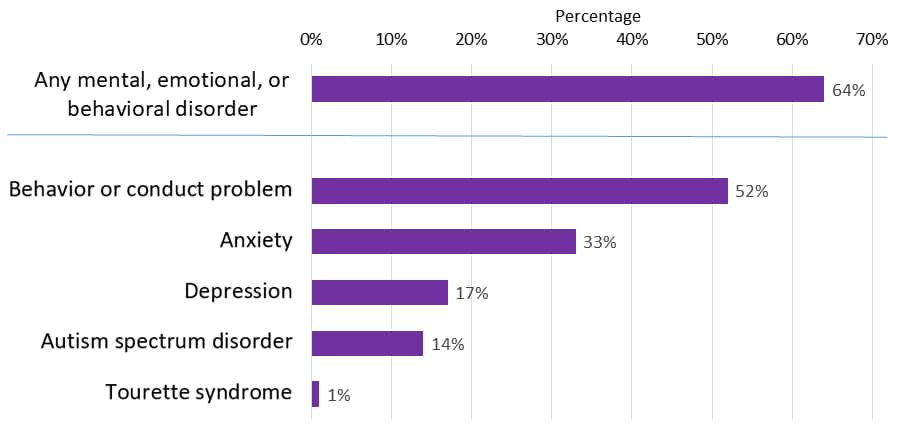
Percent of children with ADHD who had at least one other disorder.[13]
Behavior or Conduct Problems
Children occasionally act angry or defiant around adults or respond aggressively when they are upset. When these behaviors persist over time or are severe, they can become behavior disorders. Children with ADHD are more likely than other children to be diagnosed with a behavioral disorder such as Oppositional Defiant Disorder or Conduct Disorder.
Learning Disorders
Anxiety
Many children have fears and worries. However, when a child experiences so many fears and worries that they interfere with school, home, or play activities, it is an anxiety disorder. Children with ADHD are more likely than those without to develop an anxiety disorder. Examples of anxiety disorders include Separation anxiety – being very afraid when they are away from family, Social anxiety – being very afraid of school and other places where they may meet people and General anxiety – being very worried about the future and about bad things happening to them
Depression
Occasionally being sad or feeling hopeless is a part of every child’s life. When children feel persistent sadness and hopelessness, it can cause problems. Children with ADHD are more likely than children without ADHD to develop childhood depression. Children may be more likely to feel hopeless and sad when they can’t control their ADHD symptoms and the symptoms interfere with doing well at school or getting along with family and friends.
Difficult Peer Relationships
ADHD can make peer relationships or friendships very difficult. Having friends is important to children’s well-being and may be very important to their long-term development. Although some children with ADHD have no trouble getting along with other children, others have difficulty in their relationships with their peers; for example, they might not have close friends, or might even be rejected by other children. Children who have difficulty making friends might also be more likely to have anxiety, behavioral and mood disorders, substance abuse, or delinquency as teenagers.
Risk of Injuries
Children and adolescents with ADHD are likely to get hurt more often and more severely than peers without ADHD. More research is needed to understand why children with ADHD get injured, but it is likely that being inattentive and impulsive puts children at risk. For example, a young child with ADHD may not look for oncoming traffic while riding a bicycle or crossing the street or may do something dangerous without thinking of the possible consequences. Teenagers with ADHD who drive may take unnecessary risks, may forget rules, or may not pay attention to traffic. [14]
Treatment of ADHD
Types of treatment for ADHD include
- Behavior therapy, including training for parents; and
- Medications.
For children with ADHD younger than 6 years of age, the American Academy of Pediatrics (AAP) recommends parent training in behavior management as the first line of treatment, before medication is tried. For children 6 years of age and older, the recommendations include medication and behavior therapy together — parent training in behavior management for children up to age 12 and other types of behavior therapy and training for adolescents. Schools can be part of the treatment as well. AAP recommendations also include adding behavioral classroom intervention and school support. Good treatment plans will include close monitoring of whether and how much the treatment helps the child’s behavior, as well as making changes as needed along the way.
Behavior Therapy
ADHD affects not only a child’s ability to pay attention or sit still at school but also affects relationships with family and other children. Children with ADHD often show behaviors that can be very disruptive to others. Behavior therapy is a treatment option that can help reduce these behaviors; it is often helpful to start behavior therapy as soon as a diagnosis is made. The goals of behavior therapy are to learn or strengthen positive behaviors and eliminate unwanted or problematic behaviors. Behavior therapy for ADHD can include
- Parent training in behavior management;
- Behavior therapy with children; and
- Behavioral interventions in the classroom.
These approaches can also be used together. For children who attend early childhood programs, it is usually most effective if parents and educators work together to help the child.
Medications
Medication can help children manage their ADHD symptoms in their everyday life and can help them control the behaviors that cause difficulties with family, friends, and at school. Several different types of medications are FDA-approved to treat ADHD in children as young as 6 years of age:
- Stimulants are the best-known and most widely used ADHD medications. Between 70-80% of children with ADHD have fewer ADHD symptoms when taking these fast-acting medications.
- Nonstimulants were approved for the treatment of ADHD in 2003. They do not work as quickly as stimulants, but their effect can last up to 24 hours.
Medications can affect children differently and can have side effects such as decreased appetite or sleep problems. One child may respond well to one medication, but not to another. Healthcare providers who prescribe medication may need to try different medications and doses. The AAP recommends that healthcare providers observe and adjust the dose of medication to find the right balance between benefits and side effects. It is important for parents to work with their child’s healthcare providers to find the medication that works best for their child.[15]
Test Yourself
Memory
Test Yourself
Infant Memory
Infant Memory requires a certain degree of brain maturation, so it should not be surprising that infant memory is rather fleeting and fragile. As a result, older children and adults experience infantile amnesia, the inability to recall memories from the first few years of life. Several hypotheses have been proposed for this amnesia. From the biological perspective, it has been suggested that infantile amnesia is due to the immaturity of the infant’s brain, especially those areas that are crucial to the formation of autobiographical memory, such as the hippocampus. From the cognitive perspective, it has been suggested that the lack of linguistic skills of babies and toddlers limit their ability to mentally represent events; thereby, reducing their ability to encode memory. Moreover, even if infants do form such early memories, older children and adults may not be able to access them because they may be employing very different, more linguistically based, retrieval cues than infants used when forming the memory. Finally, social theorists argue that episodic memories of personal experiences may hinge on an understanding of “self”, something that is clearly lacking in infants and young toddlers.
However, in a series of clever studies, Carolyn Rovee-Collier and her colleagues have demonstrated that infants can remember events from their life, even if these memories are short-lived. Three-month-old infants were taught that they could make a mobile, that was hung over their cribs, and move by kicking their legs. The infants were in their cribs, on their backs. A ribbon was tied to one foot and the other end to a mobile. At first, infants made random movements, but then came to realize that by kicking they could make the mobile move. After two 9-minute sessions with the mobile, the mobile was removed. One week later the mobile was reintroduced to one group of infants and most of the babies immediately started kicking their legs, indicating that they remembered their prior experience with the mobile. A second group of infants was shown the mobile two weeks later and the babies only had random movements. The memory had faded (Rovee-Collier, 1987; Giles & Rovee-Collier, 2011). However, when Rovee-Collier and Hayne (1987) found that 3-month-olds could remember the mobile after two weeks if they were shown the mobile and watched it move, even though they were not tied to it. This reminder helped most infants to remember the connection between their kicking and the movement of the mobile. Like many researchers of infant memory, Rovee-Collier (1990) found infant memory to be very context-dependent. In other words, the sessions with the mobile and the later retrieval sessions had to be conducted under very similar circumstances or else the babies would not remember their prior experiences with the mobile. For instance, if the first mobile had had yellow blocks with blue letters, but at the later retrieval session the blocks were blue with yellow letters, the babies would not kick.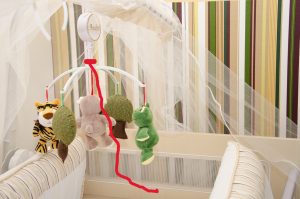 When the infant was placed on their back, the end of the ribbon was tied to the infant’s leg. Kicking that leg made the mobile move. [16]
When the infant was placed on their back, the end of the ribbon was tied to the infant’s leg. Kicking that leg made the mobile move. [16]
Infants older than 6 months of age can retain information for longer periods of time; they also need less reminding to retrieve information in memory. Studies of Deferred Imitation, that is, the imitation of actions after a time delay, can occur as early as six months of age (Campanella & Rovee-Collier, 2005), but only if infants are allowed to practice the behavior they were shown. By 12 months of age, infants no longer need to practice the behavior in order to retain the memory for four weeks (Klein & Meltzoff, 1999).[17]
Test Yourself
Memory in Early Childhood
Studies of auditory sensory memory have found that the sensory memory trace for the characteristics of a tone last about one second in 2-year-olds, two seconds in 3-year-olds, more than two seconds in 4-year-olds and three to five seconds in 6-year-olds (Glass, Sachse, & vob Suchodoletz, 2008). Other researchers have found that young children hold sounds for a shorter duration than do older children and adults and that this deficit is not due to attentional differences between these age groups but reflect differences in the performance of the sensory memory system (Gomes et al., 1999).
Children in this age group struggle with many aspects of attention, and this greatly diminishes their ability to consciously juggle several pieces of information in memory. The capacity of working memory, that is the amount of information someone can hold in consciousness, is smaller in young children than in older children and adults (Galotti, 2018). The typical adult and teenager can hold a 7-digit number active in their short-term memory. The typical 5-year-old can hold only a 4-digit number active. This means that the more complex a mental task is, the less efficient a younger child will be in paying attention to and actively processing, information in order to complete the task.
As previously discussed, Piaget’s theory has been criticized on many fronts, and updates to reflect more current research have been provided by the Neo-Piagetians, or those theorists who provide “new” interpretations of Piaget’s theory. Morra, Gobbo, Marini and Sheese (2008) reviewed Neo-Piagetian theories, which were first presented in the 1970s, and identified how these “new” theories combined Piagetian concepts with those found in Information Processing. Similar to Piaget’s theory, Neo-Piagetian theories believe in constructivism, assume cognitive development can be separated into different stages with qualitatively different characteristics, and advocate that children’s thinking becomes more complex in advanced stages. Unlike Piaget, Neo-Piagetians believe that aspects of information processing change the complexity of each stage, not logic as determined by Piaget.
Neo-Piagetians propose that working memory capacity is affected by biological maturation, and therefore restricts young children’s ability to acquire complex thinking and reasoning skills. Increases in working memory performance and cognitive skills development coincide with the timing of several neurodevelopmental processes. These include myelination, axonal pruning, synaptic pruning, changes in cerebral metabolism, and changes in brain activity (Morra et al., 2008). Myelination especially occurs in waves between birth and adolescence, and the degree of myelination in particular areas explains the increasing efficiency of certain skills. Therefore, brain maturation, which occurs in spurts, affects how and when cognitive skills develop. Additionally, all Neo-Piagetian theories support that experience and learning interact with biological maturation in shaping cognitive development.[18]
Memory in Middle-to-Late Childhood
During middle and late childhood, children make strides in several areas of cognitive function including the capacity of working memory, their ability to pay attention, and their use of
memory strategies. Both changes in the brain and experience foster these abilities. Differences in memory ability predict both their readiness for school and academic performance in school (PreBler, Krajewski, & Hasselhorn, 2013).
The capacity of working memory expands during middle and late childhood, and research has suggested that both an increase in processing speed and the ability to inhibit irrelevant information from entering memory are contributing to the greater efficiency of working memory during this age (de Ribaupierre, 2002). Changes in myelination and synaptic pruning in the cortex are likely behind the increase in processing speed and ability to filter out irrelevant stimuli (Kail, McBride-Chang, Ferrer, Cho, & Shu, 2013).
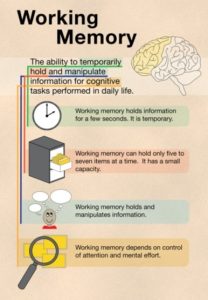
Working memory expands during middle and late childhood.[19]
Children with learning disabilities in math and reading often have difficulties with working memory (Alloway, 2009). They may struggle with following the directions of an assignment. When a task calls for multiple steps, children with poor working memory may miss steps because they may lose track of where they are in the task. Adults working with such children may need to communicate: Using more familiar vocabulary, using shorter sentences, repeating task instructions more frequently, and breaking more complex tasks into smaller more manageable steps. Some studies have also shown that more intensive training in working memory strategies, such as chunking, aid in improving the capacity of working memory in children with poor working memory (Alloway, Bibile, & Lau, 2013).
Memory Strategies
Bjorklund (2005) describes a developmental progression in the acquisition and use of memory strategies. Such strategies are often lacking in younger children but increase in frequency as children progress through elementary school. Examples of memory strategies or mnemonics, include rehearsing information you wish to recall, visualizing and organizing information, creating rhymes, such “i” before “e” except after “c”, or inventing acronyms, such as “roygbiv” to remember the colors of the rainbow. Schneider, Kron-Sperl, and Hünnerkopf (2009) reported a steady increase in the use of memory strategies from ages six to ten in their longitudinal study. Moreover, by age ten many children were using two or more memory strategies to help them recall information. Schneider and colleagues found that there were considerable individual differences at each age in the use of strategies and that children who utilized more strategies had better memory performance than their same-aged peers. Children may experience deficiencies in their use of memory strategies. A mediation deficiency occurs when a child does not grasp the strategy being taught, and thus, does not benefit from its use. If you do not understand why using an acronym might be helpful, or how to create an acronym, the strategy is not likely to help you. In a production deficiency the child does not spontaneously use a memory strategy and must be prompted to do so. In this case, children know the strategy and are more than capable of using it, but they fail to “produce” the strategy on their own. For example, children might know how to make a list but may fail to do this to help them remember what to bring on a family vacation. A utilization deficiency refers to children using an appropriate strategy, but it fails to aid their performance. Utilization deficiency is common in the early stages of learning a new memory strategy (Schneider & Pressley, 1997; Miller, 2000). Until the use of the strategy becomes automatic it may slow down the learning process, as space is taken up in memory by the strategy itself. Initially, children may get frustrated because their memory performance may seem worse when they try to use the new strategy. Once children become more adept at using the strategy, their memory performance will improve. Sodian and Schneider (1999) found that new memory strategies acquired prior to age eight often show utilization deficiencies with there being a gradual improvement in the child’s use of the strategy. In contrast, strategies acquired after this age often followed an “all-or-nothing” principle in which improvement was not gradual, but abrupt. [47]
Knowledge Base
One’s knowledge base memory has an unlimited capacity and stores information for days, months, or years. It consists of things that we know of or can remember if asked. This is where you want the information to ultimately be stored. The important thing to remember about storage is that it must be done in a meaningful or effective way. In other words, if you simply try to repeat something several times in order to remember it, you may only be able to remember the sound of the word rather than the meaning of the concept. So if you are asked to explain the meaning of the word or to apply a concept in some way, you will be lost. Studying involves organizing information in a meaningful way for later retrieval. Passively reading a text is usually inadequate and should be thought of as the first step in learning material. Writing keywords, thinking of examples to illustrate their meaning, and considering ways that concepts are related are all techniques helpful for organizing information for effective storage and later retrieval.
During middle childhood, children are able to learn and remember due to an improvement in the ways they attend to and store information. As children enter school and learn more about the world, they develop more categories for concepts and learn more efficient strategies for storing and retrieving information. One significant reason is that they continue to have more experiences on which to tie new information. New experiences are similar to old ones or remind the child of something else about which they know. This helps them file away new experiences more easily.
They also have a better understanding of how well they are performing on a task and the level of difficulty of a task. As they become more realistic about their abilities, they can adapt studying strategies to meet those needs. While preschoolers may spend as much time on an unimportant aspect of a problem as they do on the main point, school-aged children start to learn to prioritize and gauge what is significant and what is not. They develop metacognition or the ability to understand the best way to figure out a problem. They gain more tools and strategies (such as “i before e except after c” so they know that “receive” is correct but “recieve” is not.)[20]
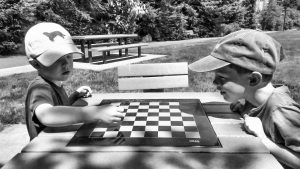
As children learn, their knowledge base grows. [21]
Test Yourself
Executive Function
Executive function is an umbrella term for the management, regulation, and control of cognitive processes, including working memory, reasoning, problem-solving, social inhibition, planning, and execution. The executive system is a theoretical cognitive system that manages the processes of executive function. This system is thought to rely on the prefrontal areas of the frontal lobe, but while these areas are necessary for executive function, they are not solely sufficient.
Role of the Executive System
The executive system is thought to be heavily involved in handling novel situations outside the domain of routine, automatic psychological processes (i.e., ones that are handled by learned schemas or set behaviors). There are five types of situations where routine behavior is insufficient for optimal performance, in which the executive system comes into play:
-
-
-
- planning or decision-making;
- error correction or troubleshooting;
- novel situations with unrehearsed reactions;
- dangerous or technically difficult situations;
- overcoming a strong habitual response; resisting temptation.
-
-
A prepotent response is a response for which immediate reinforcement (positive or negative) is available or is associated with that response. Executive functions tend to be invoked when it is necessary to inhibit or override prepotent responses (prepotent response inhibition) that would otherwise occur automatically. For example, on being presented with a potentially rewarding stimulus like a piece of chocolate cake, a person might have the prepotent “automatic” response to take a bite. But if this behavior conflicts with internal plans (such as a diet), the executive system might be engaged to inhibit that response.
Anatomy of the Executive System
Historically, executive functions have been thought to be regulated by the prefrontal regions of the frontal lobes, but this is a matter of ongoing debate. Though prefrontal regions of the brain are necessary for executive function, it seems that non-frontal regions come into play as well. The most likely explanation is that while the frontal lobes participate in all executive functions, other brain regions are necessary. The major frontal structures involved in executive function are:
- Dorsolateral prefrontal cortex: associated with verbal and design fluency, set shifts, planning, response inhibition, working memory, organizational skills, reasoning, problem solving, and abstract thinking.
- Anterior cingulate cortex: inhibition of inappropriate responses, decision making, and motivated behaviors.
- Orbitofrontal cortex: impulse control, maintenance of set, monitoring ongoing behavior, socially appropriate behavior, representing the value of rewards of sensory stimuli.[22]
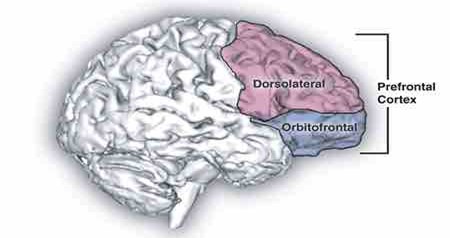
Development of the Executive System
The abilities of the executive system mature at different rates over time because the brain continues to mature and develop connections well into adulthood. Therefore, a developmental framework is helpful. Executive function corresponds to the development of the growing brain; as the processing capacity of the frontal lobes (and other interconnected regions) increases, the core executive functions emerge. Growth spurts also occur in the development of executive functions; their maturation is not a linear process.
In early childhood, the primary executive functions to emerge are working memory and inhibitory control. Cognitive flexibility, goal-directed behavior, and planning also begin to develop, but are not fully functional. [24]
A child shows higher executive functioning skills when the parents are more warm and responsive, use scaffolding when the child is trying to solve a problem and provide cognitively stimulating environments for the child (Fay-Stammbach, Hawes & Meredith, 2014). For instance, scaffolding was positively correlated with greater cognitive flexibility at age two and inhibitory control at age four (Bibok, Carpendale & Müller, 2009). In Schneider, Kron-Sperl and Hunnerkopf’s (2009) longitudinal study of 102 kindergarten children, the majority of children used no strategy to remember information, a finding that was consistent with previous research. As a result, their memory performance was poor when compared to their abilities as they aged and started to use more effective memory strategies.[25]
During preadolescence, there are major increases in verbal working memory, goal-directed behavior, selective attention, cognitive flexibility, and strategic planning. In adolescence, these functions all become better integrated as they continue developing. [26]
However, self-regulation, or the ability to control impulses, may still fail. A failure in self-regulation is especially true when there is high stress or high demand on mental functions (Luciano & Collins, 2012). While high stress or demand may tax even an adult’s self-regulatory abilities, neurological changes in the adolescent brain may make teens particularly prone to more risky decision-making under these conditions.[27]
Metacognition
Metacognition refers to the knowledge we have about our own thinking and our ability to use this awareness to regulate our own cognitive processes (Bruning, Schraw, Norby, & Ronning, 2004). Generally, metacognitive skills are divided into three component activities. They are: (1) planning: which consists of the anticipation of the sequenced actions to be used to solve the task; (2) monitoring: which implies the review of the actions that are being carried out; and (3) evaluation: which is about comparing the obtained result with the goals established at the beginning of the task. (Flavell, 1992; Veenman et al., 2006; Chatzipanteli et al., 2014).
Metacognitive skills play an important role in a wide variety of activities including the exchange of verbal information, comprehension, reading, writing, attention, memory, problem-solving, learning, or self-control. This helps to understand that metacognitive skills have been identified as a good predictor of academic success, even better than intelligence itself (Bryce et al., 2015; Nelson and Marulis, 2017; Mari and Saka, 2018).
Metacognitive skills emerge very early in life and develop during the following years (Chatzipanteli et al., 2014; Nelson and Marulis, 2017; Roebers, 2017). For example, it has been shown that children of 12 and 18 months, through their behaviors, show that they are already able to reflect on their own decisions to evaluate the accuracy of these and adapt their subsequent behaviors. Thus, they persist more in their behaviors after making a correct decision than when it is incorrect. Therefore, although complex forms of metacognition and verbal expression mature later in childhood, infants in their first year of life, through their behavior, show that they already estimate the accuracy of their simple decisions, monitor their errors, and use these metacognitive evaluations to regulate their subsequent behavior (Goupil and Kouider, 2016). Other studies have also shown that children of 18 months already use spontaneous strategies to correct their mistakes during problem-solving (DeLoache et al., 1985). At 3 years, children are able to monitor their problem-solving behavior, and at 4 years of using metacognitive processing in puzzle tasks (Sperling et al., 2000). Thus, there are various studies that show that, especially from 3 to 5 years of age, children show an important development in their metacognitive skills. Children are capable of solving their problems. They show different ways of planning, monitoring, and evaluating to do so, being able to monitor their behavior through different strategies (comments directed toward themselves, checking behaviors and error detection, behavior repetition to verify the accuracy of the result, use of gestures to support their activity) and establish behavior evaluation (including assessment of performance quality itself and evaluation when the task has been completed) (Whitebread et al., 2009; Bryce and Whitebread, 2012; Whitebread and Basilio, 2012; Whitebread and Pino-Pasternak, 2013). In summary, the behavior of children already during the first year of life and during preschool years reveals basic forms of planning, monitoring, and evaluation (Paulus et al., 2013; Chatzipanteli et al., 2014; Bernard et al., 2015; Roebers, 2017).
However, differences in the execution of metacognitive skills among children can be observed, which indicates the existence of different development rhythms of their metacognitive skills. Some children may not spontaneously acquire competent metacognitive skills. Veenman (2013) pointed out that those children who have metacognitive skills at their disposal but fail to produce them appropriately can be assisted by simple cues and reminders, provided by the context itself (for example, reminder posters) or by the teaching staff. However, children who do not have metacognitive skills may not benefit from simple cues and reminders but they can benefit from further teaching and intervention, given that metacognitive skills are modifiable and teachable even at early ages (Whitebread and Basilio, 2012; Chatzipanteli et al., 2014). [28] Therefore, much of the current study regarding metacognition within the field of cognitive psychology deals with its application within the area of education. Educators strive to increase students’ metacognitive abilities in order to enhance their learning, study habits, goal setting, and self-regulation.
Test Yourself
License: CC BY-SA: Attribution – ShareALike (modified by Marie Parnes)
License: CC BY-SA: Attribution – ShareALike (modified by Marie Parnes)
License: CC BY-SA: Attribution – ShareALike (modified by Marie Parnes)
Media Attributions
- papua-2617974_1280
- mobile-forest-2448103_1280
- working memory
- park-2429633_1280
- Lifespan Development: A Psychological Perspective 2nd Edition by Martha Lally and Suzanne Valentine-French is licensed under CC BY-NC-SA 3.0 ↵
- Lifespan Development: A Psychological Perspective 2nd Edition by Martha Lally and Suzanne Valentine-French is licensed under CC BY-NC-SA 3.0 ↵
- Introduction to Psychology - 1st Canadian Edition by Jennifer Walinga and Charles Stangor is licensed under a Creative Commons Attribution-NonCommercial-ShareAlike 4.0 International License, except where otherwise noted (modified by Marie Parnes) ↵
- Reynolds GD and Romano AC (2016) The Development of Attention Systems and Working Memory in Infancy. Front. Syst. Neurosci. https://doi.org/10.3389/fnsys.2016.00015 is licensed under Creative Commons Attribution License (CC BY 4.0). (modified by Marie Parnes)[33] Lifespan Development: A Psychological Perspective 2nd Edition by Martha Lally and Suzanne Valentine-French is licensed under CC BY-NC-SA 3.0 ↵
- Image by Ady Arif Fauzan from Pixabay ↵
- Lifespan Development: A Psychological Perspective 2nd Edition by Martha Lally and Suzanne Valentine-French is licensed under CC BY-NC-SA 3.0 ↵
- I. Cabral, M. D., Liu, S., & Soares, N. (2020). Attention-deficit/hyperactivity disorder: Diagnostic criteria, epidemiology, risk factors and evaluation in youth. Translational Pediatrics, 9(Suppl 1), S104. https://doi.org/10.21037/tp.2019.09.08 ↵
- Symptoms and Diagnosis of ADHD by the CDC is in the public domain. ↵
- Attention deficit hyperactivity disorder. (2023, June 3). In Wikipedia. https://en.wikipedia.org/wiki/Attention_deficit_hyperactivity_disorder ↵
- https://www.cdc.gov/ncbddd/adhd/facts.html#ref, public domain ↵
- https://www.cdc.gov/ncbddd/adhd/facts.html#ref, public domain ↵
- https://www.cdc.gov/ncbddd/adhd/conditions.html#ref, public domain ↵
- https://www.cdc.gov/ncbddd/adhd/data.html#another, public domain ↵
- https://www.cdc.gov/ncbddd/adhd/conditions.html#ref, public domain ↵
- https://www.cdc.gov/ncbddd/adhd/treatment.html, public domain ↵
- Image by andreapassaro from Pixabay ↵
- Authored by: Martha Lally and Suzanne Valentine-French. Provided by: College of Lake County Foundation. Locate at: http://dept.clcillinois.edu/psy/LifespanDevelopment.pdf. License: CC BY-NC-SA: Attribution-NonCommercial-ShareAlike ↵
- Lifespan Development: A Psychological Perspective 2nd Edition by Martha Lally and Suzanne Valentine-French is licensed under CC BY-NC-SA 3.0 (modified by Marie Parnes)[47] Lifespan Development: A Psychological Perspective 2nd Edition by Martha Lally and Suzanne Valentine-French is licensed under CC BY-NC-SA 3.0 (modified by Marie Parnes) ↵
- Image by Anchor is licensed under CC BY-NC-SA ↵
- Lifespan Development - Module 6: Middle Childhood by Lumen Learning references Psyc 200 Lifespan Psychology by Laura Overstreet, licensed under CC BY 4.0 (modified by Marie Parnes) ↵
- Image by Ally Laws from Pixabay ↵
- Executive Function and Control Boundless Psychology. Curation and Revision. Provided by: Boundless.comLicense: CC BY-SA: Attribution - ShareALike (modified by Marie Parnes) ↵
- Executive Function and Control Boundless Psychology. Curation and Revision. Provided by: Boundless.com ↵
- Executive Function and Control Boundless Psychology. Curation and Revision. Provided by: Boundless.com ↵
- Child Growth and Development: An Open Educational Resources Publication by College of the Canyons by Jennifer Paris, Antoinette Ricardo, and Dawn Richmond is licensed under CC BY 4.0 ↵
- Executive Function and Control Boundless Psychology. Curation and Revision. Provided by: Boundless.com ↵
- Lifespan Development: A Psychological Perspective 2nd Edition by Martha Lally and Suzanne Valentine-French is licensed under CC BY-NC-SA 3.0 (modified by Marie Parnes) ↵
- https://doi.org/10.3389/fpsyg.2019.01298 licensed by CC BY 4.0 ↵
Learning Objectives
After reading this material, you should be better equipped to:
- List and describe the elements of Piaget’s theory of cognitive development.
- Understand the criticisms of Piaget's theory.
- Explain the main ideas of Vygotsky’s Sociocultural theory.
- Compare and contrast the theories of Piaget and Vygotsky.
Jean Piaget’s Theory of Cognitive Development
Cognition refers to thinking and memory processes, and cognitive development refers to long-term changes in these processes. One of the most widely known perspectives about cognitive development is the cognitive stage theory of Swiss psychologist Jean Piaget, who studied how infants and children gradually become able to think logically and scientifically.
Piaget was a psychological constructivist, which means that Piaget believed that a person learns by mentally organizing and reorganizing new information. In addition, Piaget also believed that learning was not simply modeling or imitation, but rather an active process and interchange between individuals and their environment. Piaget used the concept of equilibrium or equilibration to describe one of four critical factors in cognitive development, the others being maturation, physical environment, and social interaction. Piaget conceived equilibration as an ongoing process that refines and transforms mental structures, constituting the basis of cognitive development. More equilibration tends to occur as an individual is transitioning from one major developmental stage to the next.
Equilibration also explains an individual’s motivation for development. Individuals naturally seek equilibrium because disequilibrium, or disequilibration, which is a mismatch between one’s way of thinking and one’s environment, is inherently dissatisfying. When individuals encounter new discrepant information, they enter into a state of disequilibrium. In order to return to a state of equilibrium, individuals can ignore the information or attempt to manage it. One option for managing discrepant information is called assimilation, and the other option is called accommodation. The to-and-fro of these two processes, caused by cognitive disequilibration, leads not only to short-term learning, but also to long-term developmental change.
After observing children closely, Piaget proposed that cognition developed through four distinct stages from birth through the end of adolescence.
- Sensorimotor Stage (Birth through 2 years old)
- Preoperational Stage (2-7 years old)
- Concrete Operational Stage (7-11 years old)
- Formal Operational (12 years old- adulthood)
By stages Piaget meant a sequence of thinking patterns with the following four key features:
- Stages always happen in the same order.
- No stage is ever skipped.
- Each stage is a significant transformation of the stage before it.
- Each later stage incorporated the earlier stages into itself.
Schema, Assimilation, and Accommodation: Piaget believed that we are continuously trying to maintain cognitive equilibrium, or a balance, in what we see and what we know (Piaget, 1954). Children have much more of a challenge in maintaining this balance because they are constantly being confronted with new situations, new words, new objects, etc. All this new information needs to be organized, and a framework for organizing information is referred to as a schema. Children develop schemata through the processes of assimilation and accommodation.
When faced with something new, a child may demonstrate assimilation, which is fitting the new information into an existing schema, such as calling all animals with four legs "doggies" because he or she knows the word doggie. Instead of assimilating the information, the child may demonstrate accommodation, which is expanding the framework of knowledge to accommodate the new situation and thus learning a new word to more accurately name the animal. For example, recognizing that a horse is different than a zebra means the child has accommodated, and now the child has both a zebra schema and a horse schema. Even as adults we continue to try and "make sense" of new situations by determining whether they fit into our old way of thinking (assimilation) or whether we need to modify our thoughts (accommodation).
Sensorimotor Stage
According to the Piagetian perspective, infants learn about the world during the primarily through their senses and motor abilities (Harris, 2005). These basic motor and sensory abilities provide the foundation for the cognitive skills that will emerge during the subsequent stages of cognitive development. Piaget called this first stage of cognitive development the sensorimotor stage and it occurs through the following six substages.
Piaget’s Six Substages of Sensorimotor Development
| Substage 1 | Reflexes (0–1 month) |
| Substage 2 | Primary Circular Reactions (1–4 months) |
| Substage 3 | Secondary Circular Reactions (4–8 months) |
| Substage 4 | Coordination of Secondary Circular Reactions (8–12 months) |
| Substage 5 | Tertiary Circular Reactions (12–18 months) |
| Substage 6 | Beginning of Representational Thought (18–24 months) |
Substage One: Simple Reflexes (Birth through 1st month)
This active learning begins with automatic movements or reflexes. For example, the nipple of a bottle comes into contact with an infant’s cheek and the infant will orient toward the object and automatically begin to suck on and lick the object. However, this is also what happens with a sour lemon, much to the infant’s surprise!
Substage Two: First habits and primary circular reactions (1st through 4th month)
Fortunately, within a couple of weeks, the infant begins to discriminate between objects and adjust responses accordingly as reflexes are replaced with voluntary movements. An infant may accidentally engage in a behavior and find it interesting such as making a vocalization. This interest motivates trying to do it again and helps the infant learn a new behavior that originally occurred by chance. At first, most actions have to do with the body, but in months to come, will be directed more toward objects.
Substage Three: Secondary circular reactions (4th through 8th months)
During the next few months, the infant becomes more and more actively engaged in the outside world and takes delight in being able to make things happen. Repeated motion brings particular interest as the infant is able to bang two lids together from the cupboard when seated on the kitchen floor.
Substage Four: Coordination of circular reactions (8th through 12th months)
Now the infant can engage in behaviors that others perform and anticipate upcoming events. Perhaps because of continued maturation of the prefrontal cortex, the infant become capable of having a thought and carrying out a planned, goal-directed activity such as seeking a toy that has rolled under the couch. The object continues to exist in the infant’s mind even when out of sight and the infant now can make attempts to retrieve it. This ability is called object permanence.
Substage Five: Tertiary Circular Reactions (12th through 18th months)
Infants from one year to 18 months of age more actively engage in experimentation to learn about the physical world. Gravity is learned by pouring water from a cup or pushing bowls from highchairs. The caregiver tries to help the child by picking it up again and placing it on the tray. And what happens? Another experiment! The child pushes it off the tray again causing it to fall and the caregiver to pick it up again! A closer examination of this stage causes us to really appreciate how much learning is going on at this time and how many things we come to take for granted must actually be learned. A mom tells the story of handing her daughters (who are close in age) a small container of candy and watching as they struggled to move the pieces up and out of the small box becoming more frustrated as their fingers would lose their grip on the treats before they made it up and out of top of the boxes. The reason for their frustration is because these children had not yet learned to simply use gravity and turn the box over in their hands. This is a wonderful and messy time of experimentation, and most learning occurs by trial and error.
Substage Six: Internalization of Schemes and Early Representational thought (18th month to 2 years of age)
The child is now able to solve problems using mental strategies, to remember something heard days before and repeat it, to engage in pretend play, and to find objects that have been moved even when out of sight. Take for instance, the child who is upstairs in a room with the door closed, supposedly taking a nap. The doorknob has a safety device on it that makes it impossible for the child to turn the knob. After trying several times in vain to push the door or turn the doorknob, the child carries out a mental strategy to get the door opened-he knocks on the door! Obviously, this is a technique learned from the past experience of hearing a knock on the door and observing someone opening the door. The child is now better equipped with mental strategies for problem-solving. This initial movement from the “hands-on” approach to knowing about the world to the more mental world of stage six marked the transition to preoperational intelligence that we will discuss in the next lesson. Part of this stage involves learning to use language.
Critical Evaluation Object Permanence
The main development during the sensorimotor stage is the understanding that objects exist and events occur in the world independently of one's own actions ('the object or 'object permanence').
Object permanence means knowing that an object still exists, even if it is hidden. It requires the ability to form a mental representation (i.e. a schema) of the object. For example, if you place a toy under a blanket, the child who has achieved object permanence knows it is there and can actively seek it. At the beginning of this stage the child behaves as if the toy had simply disappeared.
The attainment of object permanence generally signals the transition from the sensorimotor stage to the preoperational stage of development.
Blanket and Ball Study
Aim: Piaget (1963) wanted to investigate at what age children acquire object permanence.
Method: Piaget hid a toy under a blanket, while the child was watching, and observed whether or not the child searched for the hidden toy.
Searching for the hidden toy was evidence of object permanence. Piaget assumed that the child could only search for a hidden toy if s/he had a mental representation of it.
Results: Piaget found that infants searched for the hidden toy when they were around 8-months-old.
Conclusion: Children around 8 months have object permanence because they are able to form a mental representation of the object in their minds.
Evaluation: Piaget assumed the results of his study occur because the children under 8 months did not understand that the object still existed underneath the blanket (and therefore did not reach for it). However, there are alternative reasons why a child may not search for an object:
The child could become distracted or lose interest in the object and therefore lack the motivation to search for it, or simply may not have the physical coordination to carry out the motor movements necessary for the retrieval of the object (Mehler & Dupoux, 1994).
There is evidence that object permanence occurs earlier than Piaget claimed. Bower and Wishart (1972) used a lab experiment to study infants aged between 1 – 4 months old.
Instead of using a Piaget’s blanket technique they waited for the infant to reach for an object, and then turned out the lights so that the object was no longer visible. They then filmed the infant using an infrared camera. They found that the infant continued to reach for the object for up to 90 seconds after it became invisible.
Again, just like Piaget's study there are also criticisms of Bower's “reaching in the dark” findings. Each child had up to 3 minutes to complete the task and reach for the object. Within this time period, it is plausible they may have successfully completed the task by accident. For example, randomly reaching out and finding the object or even reaching out due to the distress of the lights going out (rather than reaching out with the intention of searching for an object).
Violation of Expectation Research
A further challenge to Piaget’s claims comes from a series of studies designed by Renee Baillargeon. She used a technique that has come to be known as the violation of expectation (VOE) paradigm. This technique exploits the fact that infants tend to look longer at situations or things they have not encountered before.
In a VOE experiment, an infant is first introduced to a novel situation. They are repeatedly shown this stimulus until they habituate to the stimulus, which is indicated, by the infant looking away. In Baillargeon's (1985, 1987) study, the habituation stimulus was a ‘drawbridge’ that repeatedly moved through 180 degrees (see image below).
The infants are then shown two new stimuli, each of which is a variation on the habituation stimulus. In Baillargeon’s experiments, one of these test stimuli is a possible event (i.e. one which could physically happen) and the other is an impossible event (i.e. one that could not physically happen in the way it appears).
In the ‘drawbridge’ study, a colored box was placed in the path of the drawbridge and infants were shown a "possible" event and an "impossible" event. In the possible event, the drawbridge stopped at the point where its path would be blocked by the box. In the impossible event, the drawbridge appeared to pass through the box and ended up lying flat, the box apparently having disappeared.
Baillargeon found that infants spent much longer looking at the impossible event. She concluded that this indicated surprise on the infants’ part and that the infants were surprised because they had expectations about the behavior of physical objects that the impossible event had violated. That is a solid object cannot pass through another solid object.
In other words, the infants knew that the box still existed behind the drawbridge and, furthermore, also knew that one solid object cannot just pass through another. The infants in this study were five months old, an age at which Piaget would say that such knowledge is quite beyond them.
Renee Baillargeon Violation of Expectation Experiment: Possible versus Impossible Event
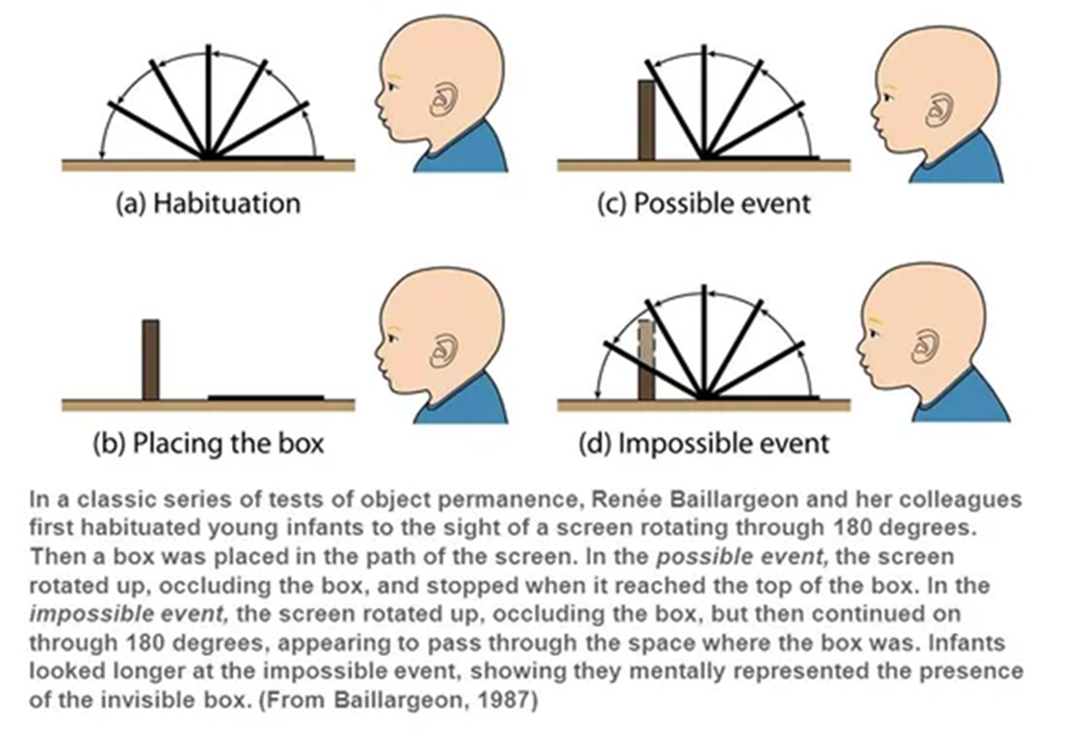
The A-not-B Error
The data does not always support Piaget’s claim that certain processes are crucial in transitions from one stage to the next. For example, in Piaget’s theory, an important feature in the progression into substage 4, coordination of secondary circular reactions, is an infant’s inclination to search for a hidden object in a familiar location rather than to look for the object in a new location. Thus, if a toy is hidden twice, initially at location A and subsequently at location B, 8- to 12-month-old infants search correctly at location A initially. But when the toy is subsequently hidden at location B, they make the mistake of continuing to search for it at location A. The A-not-B error is the term used to describe this common mistake. Older infants are less likely to make the A-not-B error because their concept of object permanence is more complete.
Preoperational Stage
Remember that Piaget believed that we are continuously trying to maintain balance in how we understand the world. With rapid increases in motor skill and language development, young children are constantly encountering new experiences, objects, and words. In the module covering main developmental theories, you learned that when faced with something new, a child may either assimilate it into an existing schema by matching it with something they already know or expand their knowledge structure to accommodate the new situation. During the preoperational stage, many of the child’s existing schemas will be challenged, expanded, and rearranged. Their whole view of the world may shift.
Piaget’s second stage of cognitive development is called the preoperational stage and coincides with ages 2-7 (following the sensorimotor stage). The word operation refers to the use of logical rules, so sometimes this stage is misinterpreted as implying that children are illogical. While it is true that children at the beginning of the preoperational stage tend to answer questions intuitively as opposed to logically, children in this stage are learning to use language and how to think about the world symbolically. These skills help children develop the foundations they will need to consistently use operations in the next stage. Let’s examine some of Piaget’s assertions about children’s cognitive abilities at this age.
Pretend Play
Pretending is a favorite activity at this time. For a child in the preoperational stage, a toy has qualities beyond the way it was designed to function and can now be used to stand for a character or object unlike anything originally intended. A teddy bear, for example, can be a baby or the queen of a faraway land!
Piaget believed that children’s pretend play and experimentation helped them solidify the new schemas they were developing cognitively. This involves both assimilation and accommodation, which results in changes in their conceptions or thoughts. As children progress through the preoperational stage, they are developing the knowledge they will need to begin to use logical operations in the next stage.
Egocentrism
Egocentrism in early childhood refers to the tendency of young children to think that everyone sees things in the same way as the child. Piaget’s classic experiment on egocentrism involved showing children a three-dimensional model of a mountain and asking them to describe what a doll that is looking at the mountain from a different angle might see. Children tend to choose a picture that represents their own, rather than the doll’s view. However, when children are speaking to others, they tend to use different sentence structures and vocabulary when addressing a younger child or an older adult. Consider why this difference might be observed. Do you think this indicates some awareness of the views of others? Or do you think they are simply modeling adult speech patterns?
Testing for Egocentrism: Piaget’s Three Mountain Task
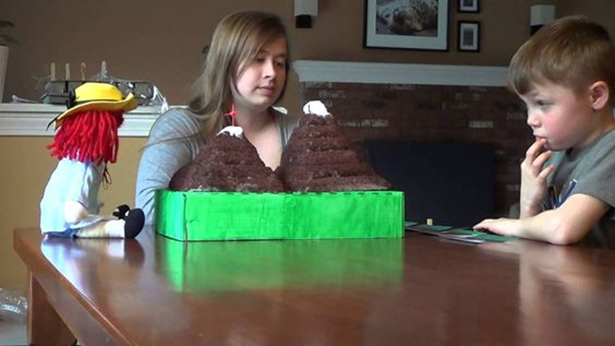
Martin Hughes (1975) argued that the three mountain task did not make sense to children and was made more difficult because the children had to match the doll's view with a photograph.
Hughes devised a task which made sense to the child. He showed children a model comprising two intersecting walls, a 'boy' doll and a 'policeman' doll. He then placed the policeman doll in various positions and asked the child to hide the boy doll from the policeman.
Hughes did this to make sure that the child understood what was being asked of him, so if s/he made mistakes they were explained and the child tried again. Interestingly, very few mistakes were made.
Hughes (1975) Police Doll Experiment
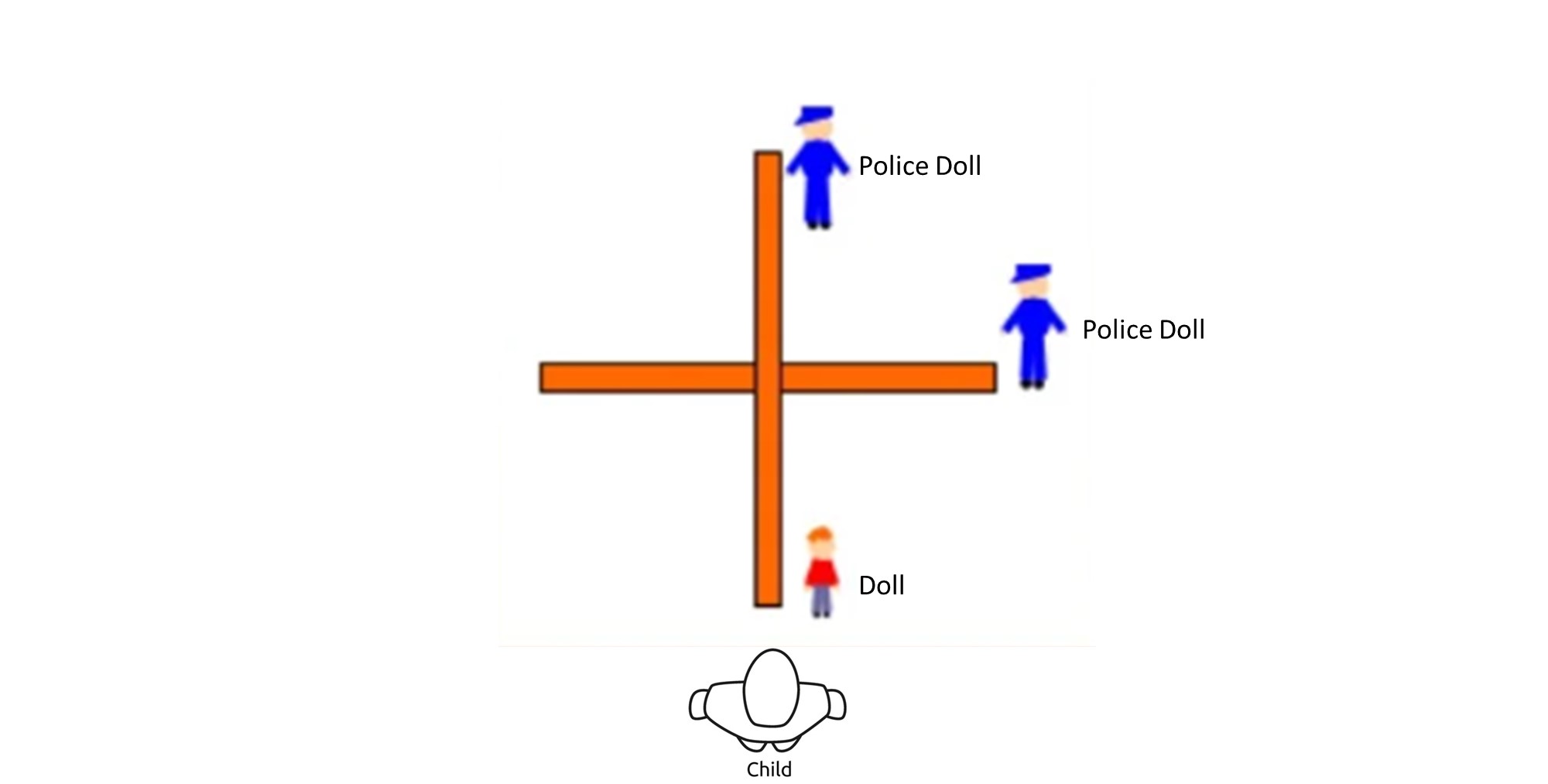
The experiment then began. Hughes brought in a second policeman doll, and placed both dolls at the end of two walls, as shown in the illustration above. The child was asked to hide the boy from both policemen, in other words he had to take account of two different points of view.
Hughes' sample comprised children between three and a half and five years of age, of whom 90 percent gave correct answers. Even when he devised a more complex situation, with more walls and a third policeman, 90 percent of four-year-old's were successful.
This experiment showed that children have largely lost their egocentric thinking by four years of age, because they are able to take the view of another. Hughes' experiment allowed them to demonstrate this because the task made sense to the child, whereas Piaget's did not.
In Borke’s (1975) test of egocentrism the child is given two identical models of a three-dimensional scene (several different scenes were used including different arrangements of toy people and animals and a mountain model similar to Piaget and Inhelder’s). One of the models is mounted on a turntable so it can easily be turned by the child.
After a practice session where the child is familiarized with the materials and the idea of looking at things from another person’s point of view, a doll is introduced (in Borke’s study it was the character Grover from ‘Sesame Street’, a program the children were familiar with).
The Grover doll was placed so it was ‘looking’ at the model from a particular vantage point and the child was invited to turn the other model around until its view of the model matched what Grover would be able to see.
Using the "mountains" model, Borke (1975) found that three-year-old's selected a correct view 42% of the time and four-year-old's selected the right view 67% of the time. With other displays, the three-years-old's accuracy increased to 80% and the four-year old's’ to 93%.
Precausal Thinking
Similar to preoperational children’s egocentric thinking is their structuring of cause-and-effect relationships based on their limited view of the world. Piaget coined the term “precausal thinking” to describe the way in which preoperational children use their own existing ideas or views, like in egocentrism, to explain cause-and-effect relationships. Three main concepts of causality, as displayed by children in the preoperational stage, include animism, artificialism, and transductive reasoning.
Animism is the belief that inanimate objects are capable of actions and have lifelike qualities. An example could be a child believing that the sidewalk was mad and made them fall down, or that the stars twinkle in the sky because they are happy. To an imaginative child, the cup may be alive, the chair that falls down and hits the child’s ankle is mean, and the toys need to stay home because they are tired. Young children do seem to think that objects that move may be alive, but after age three, they seldom refer to objects as being alive (Berk, 2007). Many children’s stories and movies capitalize on animistic thinking. Do you remember some of the classic stories that make use of the idea of objects being alive and engaging in lifelike actions?
Piaget identified four stages of animism beginning up to the ages of 4 or 5, Piaget noted that the child believes that almost everything is alive and has a purpose. In the next stage (5-7 years), children begin to think that only objects that move have a purpose. During the third stage (7-9 years), children believe that only objects that move spontaneously are thought to be alive, and finally in the fourth stage (9-12 years) the child understand that only plants and animals are alive.
Artificialism refers to the belief that environmental characteristics can be attributed to human actions or interventions. For example, a child might say that it is windy outside because someone is blowing very hard, or the clouds are white because someone painted them that color.
Finally, precausal thinking is categorized by transductive reasoning. Transductive reasoning is when a child fails to understand the true relationships between cause and effect. Unlike deductive or inductive reasoning (general to specific, or specific to general), transductive reasoning refers to when a child reasons from specific to specific, drawing a relationship between two separate events that are otherwise unrelated. For example, if a child hears a dog bark and then a balloon pop, the child would conclude that because the dog barked, the balloon popped. Related to this is syncretism, which refers to a tendency to think that if two events occur simultaneously, one caused the other. An example of this might be a child asking the question, “if I put on my bathing suit will it turn to summer?”
Cognition Errors
Between about the ages of four and seven, children tend to become very curious and ask many questions, beginning the use of primitive reasoning. There is an increase in curiosity in the interest of reasoning and wanting to know why things are the way they are. Piaget called it the intuitive substage because children realize they have a vast amount of knowledge, but they are unaware of how they acquired it.
Centration and conservation are characteristic of preoperative thought. Centration is the act of focusing all attention on one characteristic or dimension of a situation while disregarding all others. An example of centration is a child focusing on the number of pieces of cake that each person has, regardless of the size of the pieces. Centration is one of the reasons that young children have difficulty understanding the concept of conservation. Conservation is the awareness that altering a substance’s appearance does not change its basic properties. Children at this stage are unaware of conservation and exhibit centration. Imagine a 2-year-old and 4-year-old eating lunch. The 4-year-old has a whole peanut butter and jelly sandwich. He notices, however, that his younger sister’s sandwich is cut in half and protests, “She has more!” He is exhibiting centration by focusing on the number of pieces, which results in a conservation error.
Conservation of Liquid
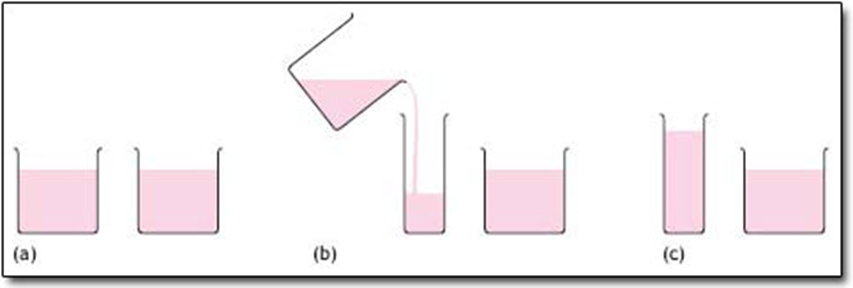
In Piaget’s famous conservation task, a child is presented with two identical beakers containing the same amount of liquid. The child usually notes that the beakers do contain the same amount of liquid. When one of the beakers is poured into a taller and thinner container, children who are younger than seven or eight years old typically say that the two beakers no longer contain the same amount of liquid, and that the taller container holds the larger quantity (centration), without taking into consideration the fact that both beakers were previously noted to contain the same amount of liquid.
Irreversibility is also demonstrated during this stage and is closely related to the ideas of centration and conservation. Irreversibility refers to the young child’s difficulty mentally reversing a sequence of events. In the same beaker situation, the child does not realize that, if the sequence of events was reversed and the water from the tall beaker was poured back into its original beaker, then the same amount of water would exist.
Centration, conservation errors, and irreversibility are indications that young children are reliant on visual representations. Another example of children’s reliance on visual representations is their misunderstanding of “less than” or “more than”. When two rows containing equal amounts of blocks are placed in front of a child with one row spread farther apart than the other, the child will think that the row spread farther contains more blocks.
Class inclusion refers to a kind of conceptual thinking that children in the preoperational stage cannot yet grasp. Children’s inability to focus on two aspects of a situation at once (centration) inhibits them from understanding the principle that one category or class can contain several different subcategories or classes. Preoperational children also have difficulty understanding that an object can be classified in more than one way. For example, a four-year-old girl may be shown a picture of eight dogs and three cats. The girl knows what cats and dogs are, and she is aware that they are both animals. However, when asked, “Are there more dogs or more animals?” she is likely to answer “more dogs.” This is due to her difficulty focusing on the two subclasses and the larger class all at the same time. She may have been able to view the dogs as dogs or animals, but struggled when trying to classify them as both, simultaneously. Similar to this is a concept relating to intuitive thought, known as transitive inference.
Transitive inference is using previous knowledge to determine the missing piece, using basic logic. Children in the preoperational stage lack this logic. An example of transitive inference would be when a child is presented with the information “A” is greater than “B” and “B” is greater than “C.” The young child may have difficulty understanding that “A” is also greater than “C.”
As the child’s vocabulary improves and more schemes are developed, they are more able to think logically, demonstrate an understanding of conservation, and classify objects.
Limitations in the Child's Thinking
Piaget focused most of the description of this stage on limitations in the child's thinking, identifying a number of mental tasks which children seem unable to do.
These include the inability to decenter, conserve, understand seriation (the inability to understand that objects can be organized into a logical series or order) and to carry out inclusion tasks.
Children in the preoperational stage are able to focus on only one aspect or dimension of problems (i.e. centration). For example, suppose you arrange two rows of blocks in such a way that a row of 5 blocks is longer than a row of 7 blocks.
Preoperational children can generally count the blocks in each row and tell you The number contained in each. However, if you ask which row has more, they will likely say that it is the one that makes the longer line, because they cannot simultaneously focus on both the length and the number. This inability to decenter contributes to the preoperational child's egocentrism.
Conservation is the understanding that something stays the same in quantity even though its appearance changes. To be more technical, conservation is the ability to understand that redistributing material does not affect its mass, number or volume. The ability to solve this and other "conservation" problems signals the transition to the next stage. So, what do these tasks tell us about the limitations of preoperational thought in general? Piaget drew a number of related conclusions:
1) Understanding of these situations is 'perception bound'. The child is drawn by changes in the appearance of the materials to conclude that a change has occurred.
2) Thinking is 'centered' on one aspect of the situation. Children notice changes in the level of water or in the length of clay without noticing that other aspects of the situation have changed simultaneously.
3) Thinking is focused on states rather than on transformations. Children fail to track what has happened to materials and simply make an intuitive judgment based on how they appear 'now'.
4) Thinking is 'irreversible' in that the child cannot appreciate that a reverse transformation would return the material to its original state. Reversibility is a crucial aspect of the logical (operational) thought of later stages.
Concrete Operational Stage
From ages 7 to 11, children are in what Piaget referred to as the concrete operational stage of cognitive development (Crain, 2005). This involves mastering the use of logic in concrete ways. The word concrete refers to that which is tangible; that which can be seen, touched, or experienced directly. The concrete operational child is able to make use of logical principles in solving problems involving the physical world. For example, the child can understand principles of cause and effect, size, and distance. The child can use logic to solve problems tied to their own direct experience, but has trouble solving hypothetical problems or considering more abstract problems. The child uses inductive reasoning, which is a logical process in which multiple premises believed to be true are combined to obtain a specific conclusion. For example, a child has one friend who is rude, another friend who is also rude, and the same is true for a third friend. The child may conclude that friends are rude. We will see that this way of thinking tends to change during adolescence being replaced with deductive reasoning.
Children Studying
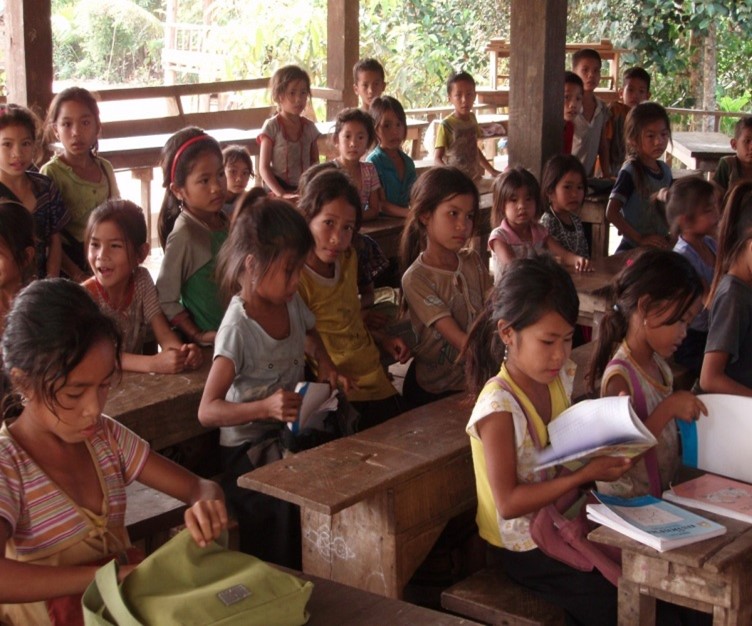
We will now explore some of the major abilities that the concrete child exhibits.
Classification: As children's experiences and vocabularies grow, they build schemata and are able to organize objects in many different ways. They also classification hierarchies and can arrange objects into a variety of classes and subclasses. Identity: One feature of concrete operational thought is the understanding that objects have qualities that do not change even if the object is altered in some way. For instance, mass of an object does not change by rearranging it. A piece of chalk is still chalk even when the piece is broken in two.
Reversibility: The child learns that some things that have been changed can be returned to their original state. Water can be frozen and then thawed to become liquid again, but eggs cannot be unscrambled. Arithmetic operations are reversible as well: 2 3 = 5 and 5 – 3 = 2. Many of these cognitive skills are incorporated into the school's curriculum through mathematical problems and in worksheets about which situations are reversible or irreversible.
Conservation: Remember the example in our last chapter of preoperational children thinking that a tall beaker filled with 8 ounces of water was "more" than a short, wide bowl filled with 8 ounces of water? Concrete operational children can understand the concept of conservation which means that changing one quality (in this example, height or water level) can be compensated for by changes in another quality (width). Consequently, there is the same amount of water in each container, although one is taller and narrower and the other is shorter and wider.
Decentration: Concrete operational children no longer focus on only one dimension of any object (such as the height of the glass) and instead consider the changes in other dimensions too (such as the width of the glass). This allows for conservation to occur.
Seriation: Arranging items along a quantitative dimension, such as length or weight, in a methodical way is now demonstrated by the concrete operational child. For example, they can methodically arrange a series of different-sized sticks in order by length, while younger children approach a similar task in a haphazard way.
Example of a Seriation Task that Involves Sorting by Shape and Size
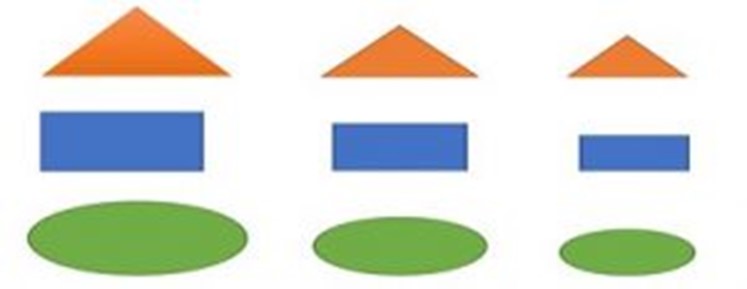
These new cognitive skills increase the child's understanding of the physical world, however according to Piaget, they still cannot think in abstract ways. Additionally, they do not think in systematic scientific ways. For example, when asked which variables influence the period that a pendulum takes to complete its arc and given weights they can attach to strings in order to do experiments, most children younger than 12 perform biased experiments from which no conclusions can be drawn (Inhelder & Piaget, 1958).)
Horizontal Decalage
Piaget used the term horizontal décalage refers to fact that once a child learns a certain function, he or she does not have the capability to immediately apply the learned function to all problems. In other words, "a horizontal décalage arises when a cognitive structure that can be successfully applied to task X cannot, though it is composed of the same organization of logical operations, be extended to task Y." Horizontal décalage is frequently used in reference to a child's ability to solve different conservation tasks. This concept recognizes that an individual child will not necessarily be on the same level of functioning in all possible areas of performance. Rather, "concepts and schemas develop through operation on and manipulation of objects in a specific manner."
An example of horizontal décalage is the invariance of quantity, which is typically mastered around the age of 6 or 7 when matter is concerned, at the age of 9 or 10 when weight is concerned, and around 11 or 12 years old when the invariant is volume. A 7-year-old child understands that when one of two equivalent balls of clay is transformed into a sausage-shape, the two lumps still consist of equal amounts of clay. The child, however, fails to correctly comprehend that the differently shaped clumps of clay weigh the same. Both tasks are similar, but the child is clearly unable to apply his understanding about the first situation to the second situation. A comparable phenomenon can be seen in a child's increasing ability to perform seriation tasks, which consists of ordering objects according to increasing or decreasing size. The ability to arrange rods in order of decreasing/increasing size is always acquired prior to the capacity to seriate according to weight.
Formal Operational Stage
The formal operational stage begins at approximately age twelve and lasts into adulthood. As adolescents enter this stage, they gain the ability to think in an abstract manner by manipulating ideas in their head, without any dependence on concrete manipulation (Inhelder & Piaget, 1958). He/she can do mathematical calculations, think creatively, use abstract reasoning, and imagine the outcome of particular actions. An example of the distinction between concrete and formal operational stages is the answer to the question “If Kelly is taller than Ali and Ali is taller than Jo, who is tallest?” This is an example of inferential reasoning, which is the ability to think about things which the child has not actually experienced and to draw conclusions from its thinking. The child who needs to draw a picture or use objects is still in the concrete operational stage, whereas children who can reason the answer in their heads are using formal operational thinking.
Hypothetico-deductive reasoning: The ability to think scientifically through generating predictions, or hypotheses, about the world to answer questions is hypothetico-deductive reasoning. The individual will approach problems in a systematic and organized manner, rather than through trial-and-error.
Abstract Thought: Concrete operations are carried out on things whereas formal operations are carried out on ideas. The individual can think about hypothetical and abstract concepts they have yet to experience. Abstract thought is important for planning regarding the future.
How Did Piaget Test Formal Operations?
Piaget (1970) devised several tests of formal operational thought. One of the simplest was the 'third eye problem'. Children were asked where they would put an extra eye, if they were able to have a third one, and why. Schaffer (1988) reported that when asked this question, 9-year-olds all suggested that the third eye should be on the forehead. However, 11-year-olds were more inventive, for example suggesting that a third eye placed on the hand would be useful for seeing round corners.
Formal operational thinking has also been tested experimentally using the balance scale task (Inhelder & Piaget, 1958). The balance-scale task (Inhelder and Piaget, 1958) is a logicomathematical problem-solving task. The scale consists of two arms in the form of a unitary beam, centrally attached to a fulcrum. On each arm, there are pegs placed at equally spaced distance from the fulcrum which are used to place unit weights. The child's task is to predict whether the left or the right arm will tilt down, or whether the unitary beam will remain in balance. Children's understanding of the weight-distance relationship with force (i.e., the torque applied to the arms) is examined according to their responses.
In line with the general idea of sequential stages of development Piaget (2002), believed that children go through three stages of development in order to solve the task (Inhelder and Piaget, 1958). It was argued that around 5–8 years of age, children acquire an understanding that their actions can impact those of an object, and consequently, children begin to understand the impact of weight and distance on the scale. However, 5–8-year-olds do not seem to be able to successfully combine the values of weight and distance together. This coordination of information would be understood around adolescence (Inhelder and Piaget, 1958).
The mathematical solution to solve the balance-scale task is to calculate torque. The torque, product of weight and distance (the amount of weight multipied by the distance from the fulcrum or center of the balance scale, represents the force applied to one side of the scale (Inhelder and Piaget, 1958; Ferretti and Butterfield, 1992; Shultz et al., 1994). The arm with the largest torque will be the one that tilts down. When torques are equal, the beam remains balanced.
Using Hypothetical Deductive Reasoning to Solve a Problem

According to Piaget, most people attain some degree of formal operational thinking, but use formal operations primarily in the areas of their strongest interest (Crain, 2005). In fact, most adults do not regularly demonstrate formal operational thought. A possible explanation is that an individual’s thinking has not been sufficiently challenged to demonstrate formal operational thought in all areas.
Critical Evaluation
While Piaget used the balance scale task to test his stage theory, Siegler (2016) suggested that development is more of a continuum and differentiated between a series of rules that children might use to solve balance-scale items. A child using Rule I will only consider the number of blocks in the prediction of the movement and disregards the distances—the number of blocks is more dominant than the distance. A child using Rule II does include the distance dimension in the prediction, but only when the number of blocks on each side of the fulcrum is equal. A child using Rule III does know that both the number-of-blocks and the distance dimension are relevant but does not know how to integrate both dimensions. A child using this rule will guess or ‘muddle through’ when both dimensions are in conflict. A child using Rule IV compares the torques on each side resulting in correct responses on all problems.
Like Piaget, Siegler found that eventually the children were able to take into account the interaction between the weight of the discs and the distance from the center, and so successfully predict balance. However, this did not happen until participants were between 13 and 17 years of age. Consequently, Siegler concluded that children's cognitive development is based on acquiring and using rules in increasingly more complex situations, rather than in stages.
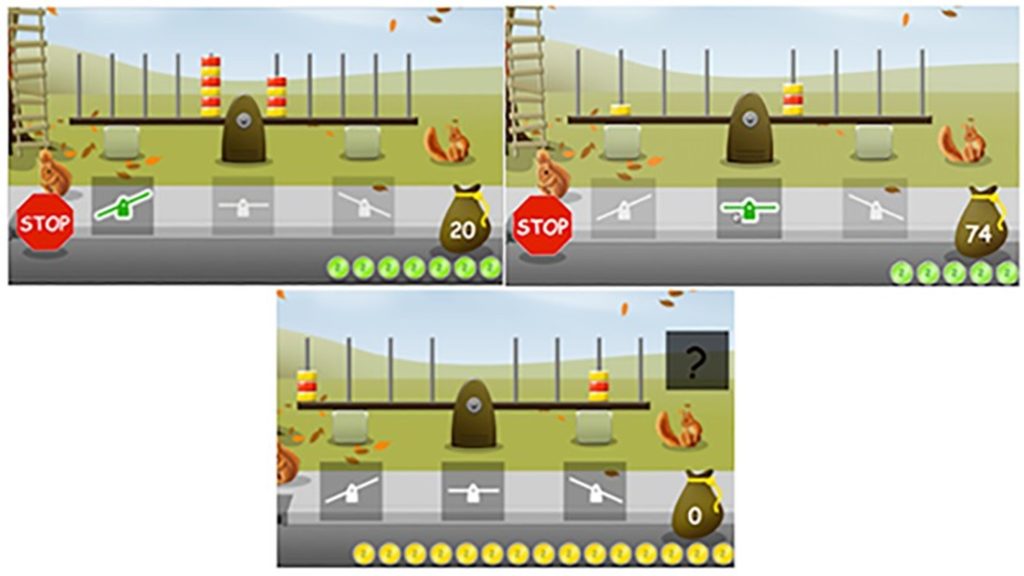
Criticisms of Piaget's Theory
As with other major contributors of theories of development, several of Piaget’s ideas have come under criticism based on the results of further research. For example, several contemporary studies support a model of development that is more continuous than Piaget’s discrete stages (Courage & Howe, 2002; Siegler, 2005, 2006). Many others suggest that children reach cognitive milestones earlier than Piaget describes (Baillargeon, 2004; de Hevia & Spelke, 2010).
According to Piaget, the highest level of cognitive development is formal operational thought, which develops between 11 and 20 years old. However, many developmental psychologists disagree with Piaget, suggesting a fifth stage of cognitive development, known as the postformal stage (Basseches, 1984; Commons & Bresette, 2006; Sinnott, 1998). In postformal thinking, decisions are made based on situations and circumstances, and logic is integrated with emotion as adults develop principles that depend on contexts. One way that we can see the difference between an adult in postformal thought and an adolescent in formal operations is in terms of how they handle emotionally charged issues.
It seems that once we reach adulthood our problem-solving abilities change: As we attempt to solve problems, we tend to think more deeply about many areas of our lives, such as relationships, work, and politics (Labouvie-Vief & Diehl, 1999). Because of this, postformal thinkers can draw on past experiences to help them solve new problems. Problem-solving strategies using postformal thought vary, depending on the situation. What does this mean? Adults can recognize, for example, that what seems to be an ideal solution to a problem at work involving a disagreement with a colleague may not be the best solution to a disagreement with a significant other.
Vygotsky’s Sociocultural Theory of Cognitive Development
While Vygotsky and Piaget are contemporaries, and both agreed that children were active learners in their own development, each also differed in their thinking when it came to how one's cognition develops. Unlike Piaget, Vygotsky argued that learning preceded cognitive development, and that culture directly affected cognitive development. Recall that for Piaget, egocentric speech, or disappears at the end of the preoperational stage, and was no longer necessary. For Vygotsky, egocentric speech does not disappear, but rather begins to partner with the child as they take part in cognitive tasks. According to Vissers, Tomas, and Law (2020), the first stage of language development defined by Vygotsky occurs during early childhood language acquisition when children master the fundamentals of an external dialogue. This early form of speech focuses on connecting with others – on communication and regulation of one another’s behavior and was referred to by Vygotsky as external speech. Then around the age of 3-4 years, as children’s linguistic experience increases, they begin to start talking to themselves. Vygotsky referred to this type of speech as "private speech," or speech for oneself. At this stage, the main function of private speech is self-regulation or self-guidance. For example, during this stage, you may observe a 4-year-old, “whisper” to themselves while planning their next step or commenting on their current activity. A distinguishing feature of private speech compared to external speech is the absence of an interlocutor, which allows for the child to simplify the compositional and syntactic conventions that are required in a dialogue with another person. The flexibility in using speech covertly, what Vygotsky called “inner speech,” or thought develops after the age of 6 or 7, when children fully internalize their thought during various cognitive tasks, such as silent remembering, reading, and writing.
According to Vygotsky, learning is a process of acquiring knowledge, beliefs, and problem-solving strategies through interactions with what he termed “more knowledgeable others”. It is through our interactions with others that we make sense of the information we encounter. It is an inherently social process, one in which we depend on others to help us understand the world. Social learning thus precedes individual development and is unique to the individual.
The Zone of Proximal Development, or ZPD, explains the ability of a learner to extend beyond their own innate ability through interaction with others in their environment. It is the difference between one's level of actual development, or what a learner can achieve independently, and the individuals' level of potential development, or what they can learn with the guidance and support of what Vygotsky referred to as “more knowledgeable others." More knowledgeable others, or MKOs, are central to the ZPD learning process. Simply put, an MKO is someone with higher-level knowledge or skill than the learner. As such, they serve as a source of sociocultural learning. MKOs are often thought of as older individuals, but they can be peers or younger persons provided they have a body of knowledge and experience that the learner doesn’t yet possess.
The Zone of Proximal Development
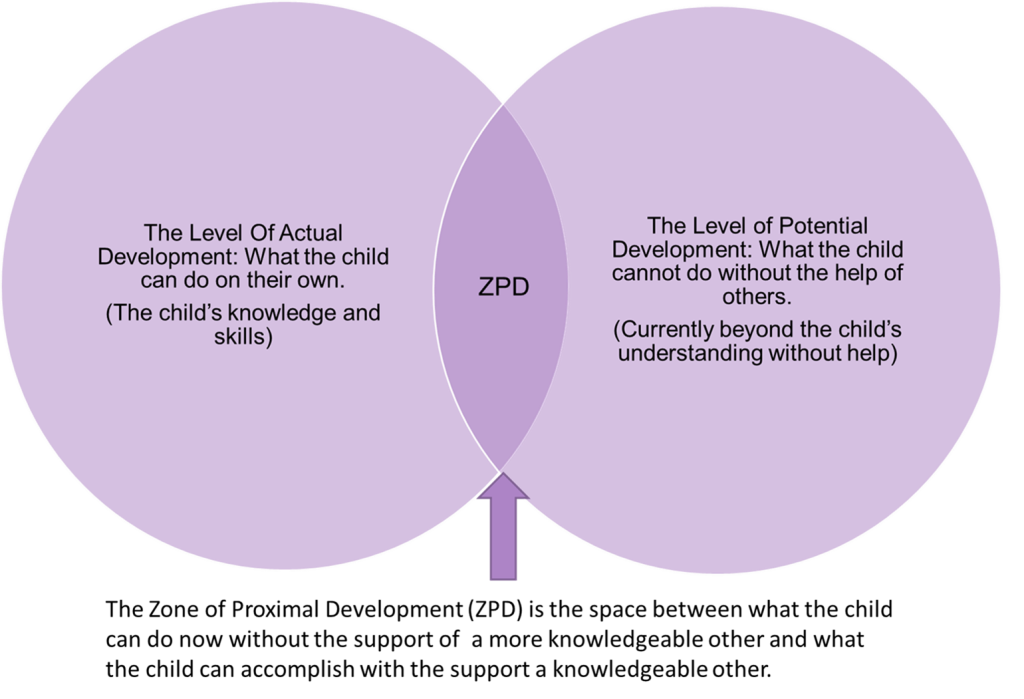 The sociocultural theory of learning emphasizes the need for scaffolding of information. That is, teaching is done to build knowledge and skill in incremental stages. For example, a teacher may demonstrate a technique, have the learner practice it under supervision, and provide guidance for skill improvement. Cycles of this may occur until the learner is able to practice the skill in its entirety independently. Cooperative learning opportunities are also important in this model. In this approach, more knowledgeable others (MKOs), or skilled peers are allowed to interact with the learner within the ZPD. Through these types of interactions, the learner grows and develops without direct intervention from the teacher. Composing groups with a mixture of high and lower-performing students helps foster collaborative development. Reciprocal teaching is also a methodology under this model. With reciprocal teaching, teachers and learners use summarizing, questioning, clarifying, and predicting to improve the student’s ability to learn from text. As with other sociocultural methodologies, the teacher’s involvement is reduced over time until the learner is functioning independently. Scaffolding is effective when:
The sociocultural theory of learning emphasizes the need for scaffolding of information. That is, teaching is done to build knowledge and skill in incremental stages. For example, a teacher may demonstrate a technique, have the learner practice it under supervision, and provide guidance for skill improvement. Cycles of this may occur until the learner is able to practice the skill in its entirety independently. Cooperative learning opportunities are also important in this model. In this approach, more knowledgeable others (MKOs), or skilled peers are allowed to interact with the learner within the ZPD. Through these types of interactions, the learner grows and develops without direct intervention from the teacher. Composing groups with a mixture of high and lower-performing students helps foster collaborative development. Reciprocal teaching is also a methodology under this model. With reciprocal teaching, teachers and learners use summarizing, questioning, clarifying, and predicting to improve the student’s ability to learn from text. As with other sociocultural methodologies, the teacher’s involvement is reduced over time until the learner is functioning independently. Scaffolding is effective when:
- The task is broken down into manageable steps.
- Direction is provided to keep the child focused.
- The child's interest in the task is motivated by the teacher.
- Factors that cause frustration are reduced.
- The expectation of the activity are defined and modeled.
- Using open-ended questions like, "What do you think will happen if we...?
Vygotsky vs. Piaget
Vygotsky and Piaget were two influential theorists who focused on children's cognitive development. While they share some similarities in their perspectives, there are also some significant differences between their theories. Who is correct? Both theories certainly contribute to our understanding of how children learn. Overall, Vygotsky's theory emphasizes the role of social and cultural factors in cognitive development, while Piaget's theory focuses on individual exploration and experience with the physical world.
Comparison of Vygotsky and Piaget's Theories


